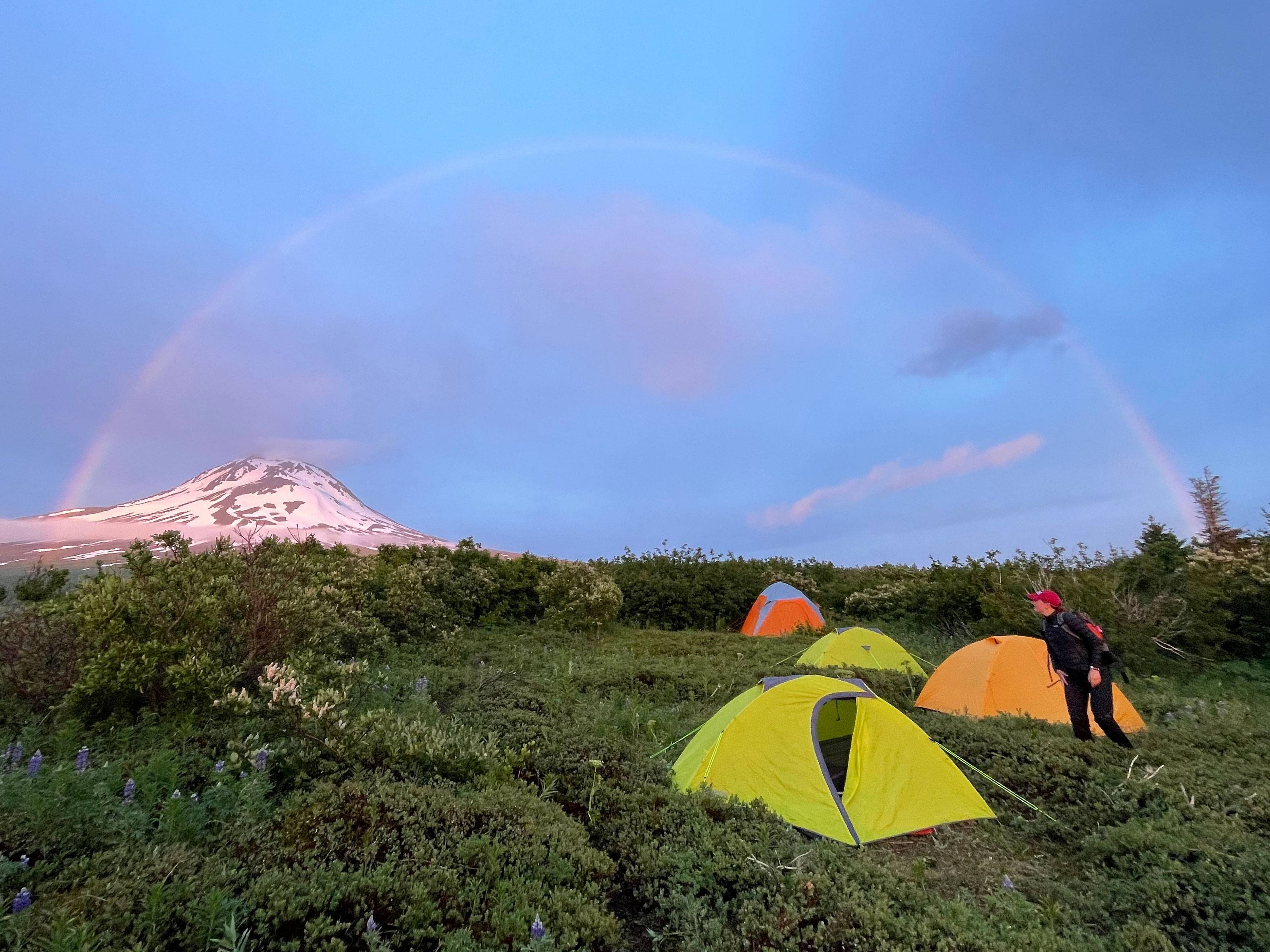This past summer, Colgate geology students Ryan D’Errico ’25, Rylie Berwanger ’26, and Sam Ash ’27 embarked on a once-in-a-lifetime research trip to gather samples from Augustine Volcano in southern Alaska. Led by Senior Lecturer in Earth and Environmental Geosciences Alison Koleszar, they returned with new insights to an enduring question: Is Augustine more explosive than previously thought?
Koleszar, who graduated as a member of the Colgate Class of 2004, now holds research interests in geologic hazards and the eruptive styles of volcanoes. “Augustine, specifically, has a history of big eruptions that generate tsunamis up through the Cook Inlet into the population centers through south central Alaska,” she explains. “When it erupts, it throws a lot of ash into the air,” disrupting airline travel between the Eastern and Western hemispheres.
In 2022, following the approval of a proposal to the National Science Foundation, Koleszar took her first group of students to Augustine, alongside scientists at the Alaska Volcano Observatory (AVO), to gather samples and assess geologic evidence of its eruptive behavior.
“Research works best when it is a collaborative process, which extends beyond fieldwork to the lab work, publications, and many discussions that follow,” says Jessie Farrell ’24, a student who attended the 2022 trip and presented their findings at the Geological Society of America (GSA) conference in Pittsburgh, Pa. “One of the major questions guiding our research was, ‘What mechanisms feed into why Augustine has had such drastic differences in eruption intensity over time?’”
In the modern era, Augustine has had relatively small eruptions, but just a few hundred years ago, the volcano had much larger, more explosive eruptions. By collecting on-site samples of deposits of ash and pumice on Augustine, Koleszar and her students were able to gauge the explosivity of previous eruptions based on factors including grain size, componentry, and geochemistry.
To reach their sampling sites, students on the 2022 trip shuttled around the volcano by helicopter. But in 2024, in the absence of this equipment, the trip looked a little different: Students hiked around the flanks of Augustine, weathering the elements to reach the site.
“Augustine is located on an uninhabited island, so we had to make our own way,” says D’Errico , an attendee of the 2024 trip who also serves as co-president of Colgate’s Hiking Club. On their 8-mile hike to the site, students waded knee-deep, ice-cold waters — a “treacherous but exhilarating” experience — sometimes encountering fields of flowers and local wildlife.
“I've never seen so many bald eagles before,” says D’Errico, who also encountered foxes and seals on his way to the sampling site. Captivated by the trip itself and the later research process, D’Errico will explore the subject in his senior thesis project, to develop throughout the academic year. Of his particular interest is how, by revisiting Augustine, Colgate students were able to identify an exciting new detail about its eruptive history:
“One of the deposits of tephra we studied had previously been described in the literature as Tephra C, but, what the Colgate students have found working on that site for a couple of years is that we’re pretty confident that it’s actually not Tephra C — it’s actually Tephra M,” explains Koleszar. “Since we found pieces of pumice larger than previously reported, this suggests the eruption is bigger than previously thought, and also more recent,” she concludes, since volcanologists determine the size of an eruption by the thickness of the deposit.
This research not only aims to predict and mitigate risks associated with future eruptions, but also to familiarize curious students with a specialized field of geology.
“Experiences like this are one of the best parts of studying science here at Colgate,” says Koleszar. “It’s wonderful that we get to do this type of research with undergrads and have opportunities to go places like this.”
